Click here to print
Collections Worth Seeing, Hidden in Plain Sight
posted January 9, 2015
A grant program to preserve some surprising collections will now provide funds to make them more widely available through digitization

A poster for Karl Neumann’s 1954 film, “Drei Vom Varieté” (Three from the Cabaret); from George Mason University’s collection of posters from arts and political posters from the former East Germany, including some 3,400 film posters.
The great collections aren’t all in major institutions, nor in plainest view. They’re not necessarily even conventionally great.
Like the superior “minor novel,” the out-of-the-ordinary, unanticipated collection may produce pleasures that, while of narrow band, are deep. It may provide a window on ways of life easily overlooked.
A university library’s 64,800 45-RPM recordings of popular music; a repository of 1,300 oral histories of Japanese American men who served in segregated units during WWII; 166 linear feet of Quaker diaries, journals, commonplace books, and other manuscripts; 24,698 photographic negatives documenting the Mexican-descent community of Los Angeles between 1967 and 1977…
Those are examples of “hidden collections” that the Council on Library and Information Resources has encouraged and assisted during the last five years as part of a grant program. And now, in a second phase of the work, the Council will help libraries and archives to digitize such collections thanks to a new initiative with funds from the Andrew W. Mellon Foundation.
The Council on Library and Information Resources is an independent, nonprofit organization that helps libraries and cultural and higher-education institutions to make use of their collections for research, teaching, and learning. Based in Washington DC, it was created in 1997 through a merger of the Council on Library Resources and the Commission on Preservation and Access.
The “hidden” collections have not been hidden in the sense of being lost and feared never to resurface; their status is closer to “lost in plain sight”: archivists have known where they are, and want them to become more widely recognized.
Since the program began in 2008, 129 grants totaling more than $27.5-million have gone to institutions nationwide for the upkeep of the hidden collections. Among the dazzling array of treasures have been several collections of film and other audiovisual materials.
Last month, December 2014, the CILR announced both its new, digitizing initiative, as well as the final annual group of selections in its original Hidden Collections series of grants. The awards brought to a close that first cycle of Hidden Collections awards.
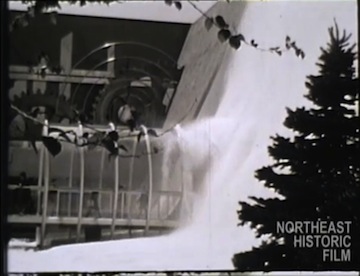
Northeast Historic Film, in collaboration with the Queens Museum of Art and the George Eastman House International Museum of Photography and Film, is cataloging amateur filmmakers’ records of the New York World’s Fair of 1939–1940.
In the organization’s successful initial application to the Mellon Foundation for funding support, five years ago, CLIR specialists noted that “hidden collections” were something of an “elephant in the closet” of librarianship. A “daunting, pervasive problem” in their institutions, the librarians said, was that libraries, archives, and cultural institutions hold millions of items that are all but unknown, unused, and unusable because they have never been adequately cataloged. A 1998 American Libraries Association survey of 99 North American research universities’ special collections found that on average 15 percent of printed volumes in special collections remained unprocessed or uncatalogued. The figure rose to an average of 27 percent of manuscripts, and 35 percent and 37 percent for video and audio respectively.
“Nationally,” the CLIR told the Mellon Foundation, “this represents a staggering volume of items of potentially substantial intellectual value that are unknown and inaccessible to scholars.” Many cry out for broader recognition and awareness. Take, for example, the Freer Gallery of Art and Arthur M. Sackler Gallery’s collection of 1,200 extremely rare illustrated manuscripts and folios of paintings and calligraphy from the Islamic world. It includes Korans from the late eighth to the late nineteenth centuries. Among the treasures is Balami’s Tarikhnama, made in about 1300, and one of the earliest extant illustrated Islamic world histories, along with one of two existing copies of a volume that contains the earlier West Asian ink drawings: the collected works of Sultan Husayn Jalayir (1402).
As part of its program, CLIR keeps a registry of hidden collections and archives, based upon information supplied by applicants. It includes details on projects selected for CLIR funding, and many others.
Program staff have been exploring such issues as how legal issues around intellectual property and privacy would be that digitization. Archivists and librarians involved in the funding project will meet in Philadelphia in March, at the University of Pennsylvania Libraries. There they will take stock of progress to date, and plan for the future of newly cataloged, and soon “hidden collections” that will in coming years be made publicly accessible through digitization.
Audiovisual Collections among Funded Projects
Among the awardees in the final, 2014 cycle of cataloging grants were a few with audiovisual focuses, or at least with some audiovisual items that may benefit from grant-funded care and publicity. Those are listed here, followed by details of audiovisual-related recipients of awards from earlier years of the grant program.
2014 Recipients
Solomon R. Guggenheim Foundation / Museum Archives Audiovisual Collections is providing access to audiovisual recordings and paper records documenting exhibitions, performances, and public programs relating to New York art and performance between the 1960s and the present.
Storefront for Art and Architecture is processing its archive of records of 280 exhibitions and affiliated performances, lectures, publications, and events dating from its founding in 1982. Audiovisual records are among the holdings, which document the work of 1,500 architects, artists and designers through original artwork and programming documents, photographic prints and negatives, audiovisual media, newsletters, and publications.
Trace Foundation / Latse Library is processing and making accessible its Tibetan Audio-Visual Collections, one of the only comprehensive archives of audio-visual materials from Tibetan and Himalayan regions. The 7,000 audio and video items capture a vast array of Tibetan music and performing arts — traditional and contemporary music, film, television, dance, and other cultural events — that have emerged since the Cultural Revolution (1967-76) in Tibet, India, Ladakh, Bhutan, and beyond.
WGBH Educational Foundation is developing a National Educational Television Collection Catalog with descriptions of titles of NET (1952-1972), the earliest public television content — up to 10,000 titles including social documentaries, most held at WGBH, WNET, Indiana University, and the Library of Congress.
Projects Funded in 2013
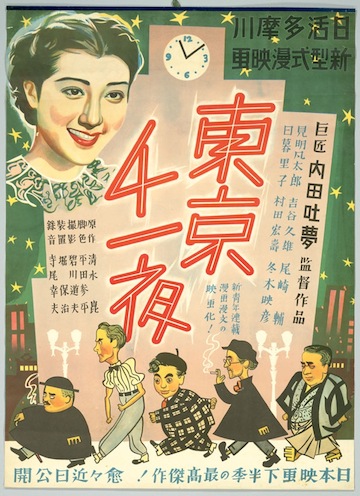 Columbia University’s Makino Collection Film Ephemera and Rare Book Project has more than 80,000 items chronicling the history of Japanese and East Asian film from the earliest moving pictures in Japan through 2006. (See feature article, coming soon.)
Columbia University’s Makino Collection Film Ephemera and Rare Book Project has more than 80,000 items chronicling the history of Japanese and East Asian film from the earliest moving pictures in Japan through 2006. (See feature article, coming soon.)
George Eastman House is creating finding aids that facilitate access to the manuscript collections of four independent filmmakers – Leo Hurwitz, Lothar Wolff, Douglass Crockwell, and James Reese. Those filmmakers’ documentary, experimental, avant-garde, and industrial films have been well documented, but the accompanying paper collections have gone largely unprocessed for up to decades. They include correspondence, notes, scripts, financial records, photographs, photo albums, drawings, patents, audio tapes, flip books, mutoscope reels, plaques and awards, newspaper clippings, and personal effects.
Hagley Museum and Library’s David Sarnoff Collection Processing Project is providing public access to its materials documenting the business dealings of Sarnoff, a pioneer of the media and electronics age. The history of the Radio Corporation of America (RCA) and the founding of the National Broadcasting Company (NBC) are recorded in the collection’s manuscripts, reports, notebooks, publications, photographs, moving images, and sound recordings.
Union College is providing web access to the video recordings and other material dating from 1899–1996 and housed at the Kelly Adirondack Center of Union College — correspondence, photographs, lantern and 35mm slides, maps, meeting minutes, financial records, publications… — of 20 advocacy groups that are in the collections of John S. Apperson and Paul Schaefer, lifelong conservationists and advocates of the Adirondack Park, the largest protected parkland in the contiguous United States.
Yellowstone Park Foundation: Films are among material that documents the natural and cultural resources of Yellowstone National Park, the world’s first national park, as are manuscripts, photos, maps, oral histories, administrative records, and scientific data that relate to the park’s geology, ecology, tourism, and history.
Projects Funded in 2012
Alabama Folklife Association, Inc.‘s collection is dispersed among the basement of the Alabama State Council on the Arts, private homes, and offices and includes film and video recordings along with digital files, field recordings, slides, photographs, reel-to-reel tapes, cassettes, and ephemera. The material, which documents music, food ways, and material culture, was collected in churches, community centers, occupational sites, public facilities, and homes.
American Museum of Natural History is processing archival records — scientists’, artists’, photographers’, and field assistants’ films as well as notes, sketches, diaries, journals, specimen books, photographs, and sound recordings — from expeditionary field work such as the Lumholtz Expeditions to Mexico, 1890-98; the Jesup North Pacific Expedition, 1897-1902; the Vernay Hopwood Chindwin Expedition to Burma, 1934-35; and the Whitney South Sea Expedition, 1921-37. The material is destined for use in biology, ecology, cultural anthropology, and the history of science, and for exhibitions and educational programs programs.
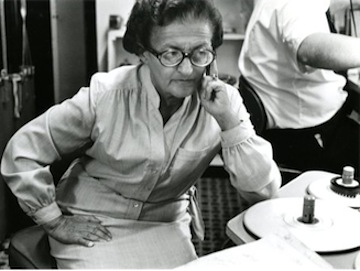 Jewish Theological Seminary of America is using its grant to processes the archives of Johanna Spector (1915-2008): materials related to dwindling Jewish communities in Africa, the Middle East, and Asia — of India, Yemen, Azerbaijan, Egypt, Armenia, and the Samaritan people. Spector was a world-renowned ethnomusicologist at The Jewish Theological Seminary (1962-1985) and author of several books and articles, prolific lecturer, and producer of four documentary films. The collection includes 950 reels of film taken during her travels, along with papers relating to her films and rough cuts of documentaries.
Jewish Theological Seminary of America is using its grant to processes the archives of Johanna Spector (1915-2008): materials related to dwindling Jewish communities in Africa, the Middle East, and Asia — of India, Yemen, Azerbaijan, Egypt, Armenia, and the Samaritan people. Spector was a world-renowned ethnomusicologist at The Jewish Theological Seminary (1962-1985) and author of several books and articles, prolific lecturer, and producer of four documentary films. The collection includes 950 reels of film taken during her travels, along with papers relating to her films and rough cuts of documentaries.
Montana Historical Society’s Lee Metcalf Photograph and Film Collections document, with materials dating 1915-1978, the life and work of Lee Metcalf who served as state representative, assistant Attorney General, associate justice on the Montana Supreme Court, U.S. Representative and, for over two decades, U.S. Senator. An early proponent of pollution control, he also advocated on behalf of rural cooperatives, public power projects, agriculture and mine workers, government redress of social injustices, libraries and other educational institution, minimum-wage and work-safety laws, job-training programs, consumer protection, and Native America autonomy.
Museum of the City of New York and the Queens Museum of Art hold 12,000 items documenting the New York World’s Fairs of 1939 and 1964, including books, pamphlets, printed ephemera, rare architectural blueprints, original artworks, film and audio recordings, photographic prints and negatives, architectural models, textiles, and Fair-themed jewelry, scarves, buttons, plates, and other memorabilia. The collection has many architectural plans and original design renderings, official and unofficial photographs, and home movies of the Fairs during construction and after they opened. QMA holds photographs, documents, and ephemera related to Salvador Dali’s 1939 Dream of Venus pavilion, as well as the entire Photography as Fine Art exhibit from the 1964 Kodak Pavilion.
Projects Funded in 2011
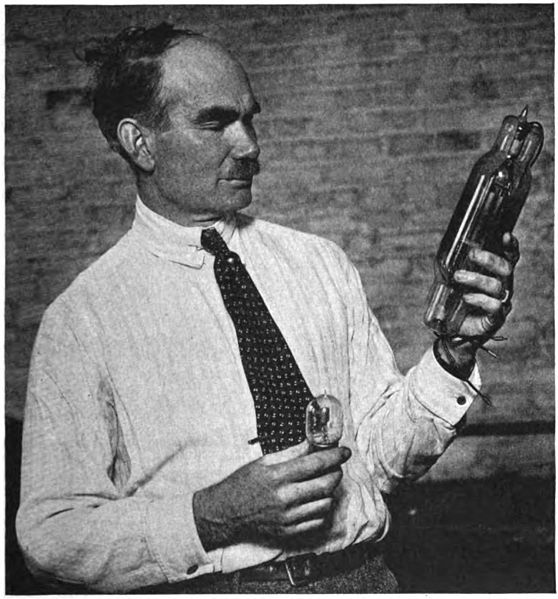
Lee De Forest with two of the three-electrode “Audion” vacuum tubes that he invented between 1906 and 1919. Image: public domain, from James H. Collins, “The genius Who Put the Jinn in the Radio Bottle,” Popular Science, May 1922.
History San José: The Perham Collection of Early Electronics preserves rare books and ephemera, trade manuals, personal papers and archives, 1200 photographs, and 2500 electronics devices from some of the earliest commercial ventures in electronics in the Western United States from the 1890s to 1960. The project is providing access to manuscript collections within the Perham Collection, including the Lee de Forest papers, the largest collection documenting the Yale Ph.D. in physics who invented hundreds of devices for the mass electronic media including in radio and motion–picture design.
North Carolina State University Libraries has hundreds of video and audio tapes documenting conferences, demonstrations, debates, and oral histories with important figures in the animal welfare movement, most of them held in the Ron Scott Videotapes collection, are among material being cataloged for access. Also being processed are records of the Animal Rights Network (ARN) — files from animal welfare organizations around the world and their coordinating activities from the 1970s to about 2000 — and hundreds of subject files with books, pamphlets, newsletters, and reports on topics related to animal welfare and anti-animal-welfare organizations, held by the Animal Welfare Institute (AWI), and its lobbying organization, the Society for Animal Protective Legislation (SAPL), most from the late 1950s to 1990.
Rutgers, the State University of New Jersey: to catalog five collections on women in jazz at its Institute of Jazz Studies — Ella Fitzgerald (1917–1996), Abbey Lincoln (1930–2010), Annie Ross (1930–), Victoria Spivey (1906–1976), and Wilma Dobie (1918–2005). In some cases, the collections include, in addition to notebooks, scrapbooks, photographs, music manuscripts, and scores, a variety of video and audio recordings of issued or unissued performances, and interviews.
Smithsonian Institution, Archives of American Art: audio-visual media documenting postmodern American art movements during a period when ephemeral and dynamic new visual art forms were emerging in studios, art communities, galleries, and art spaces. The collections contain media–based elements of the artwork, such as sound art, video art, or multimedia art forms, as well as media–based archival documentation of environmental art, conceptualism, performance, minimalism, or technology–based arts installations. The archival documentation is often all that remains of the artwork. The project will provide public access to the collections as well as develop and document an archival approach to processing audiovisual media in the context of an archival collection, rather than as isolated items.
Projects Funded in 2010
Northeast Historic Film: In a collaboration with the Queens Museum of Art and the George Eastman House International Museum of Photography and Film, NHF is cataloging amateur filmmakers’ records of the New York World’s Fair of 1939–1940, and of that era. Films come from such sources as the The Robert Decker Collection at Northeast Historic Film (Kodachrome color footage), the Queens Museum of Art (8mm and 16mm film), and George Eastman House (black-and-white and Kodachrome film from personal collections shot around New York City and the World’s Fair).
Syracuse University is cataloging materials from 1953 to 1085 relating to the avant-garde publisher Grove Press and for its landmark literary magazine The Evergreen Review, include 2500 print titles, manuscript drafts, correspondence, photographs, and editorial, film, and publicity files. The New York–based press published authors William Burroughs, Samuel Beckett, Jean Genet, Bertolt Brecht, Frantz Fanon, Kenzaburo Oe, and Pablo Neruda, among many others, and due to the content of novels — Victorian erotica, literary modernism, post–colonial Latin America and Africa — often faced legal challenges; among the materials being cataloged at papers relating to obscenity trials involving Lady Chatterly’s Lover and Tropic of Cancer.
University of Chicago, on behalf of the Black Metropolis Research Consortium, was granted funds to process 150 Chicago-area collections relating to Consortium’s survey of unprocessed and inaccessible archival collections documenting African American history and culture — political, cultural, social, spiritual, and economic aspects of black Americans’ lives throughout the history of Chicago.
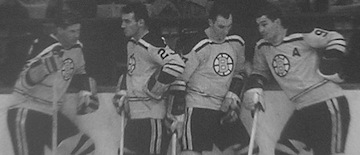
The WCVB-TV Collection at NHF contains news film, documentaries and factual works, including 180 episodes of the long running news program “Chronicle,” and 4,000 cans of 16mm film containing over 4 million feet of daily coverage and specials filmed between 1972 and 1979. The WCVB-TV collection captures mandatory school bussing and the reactions of communities in Boston (1974), the Red Sox World Series run in 1975, the Kennedy Family, the Maine Indian Land Claims Settlement, and many other events of great and small import.
Boston Local TV News project: a collaboration among four institutions and their local TV news collections – the Boston Public Library (BPL), Northeast Historic Film (NHF), WGBH, and Cambridge Community Television (CCTV) — received a grant to create a shared catalog of 40 years of programming. Archivists are using the existing catalogs from WGBH, CCTV and other sources to create catalogs for the collections of BPL and NHF, dating from the early 1960 to the 1980s. The project’s goal is to reflect the issues and concerns of many communities across the nation: politics both local and national, poverty, antiwar protests, affirmative action, women’s rights, anti-apartheid activity, environmental awakening, changes in health care, and new medical advances. Local sports coverage spotlights the thoughts and reactions of players, coaches and fans, as a project blog relates. “This project will bring back 40 years of television news to let us explore the issues of importance, events we all remember, and some we’d rather forget,” said David Weiss, the executive director of Northeast Historic Film.
Projects Funded in 2009
George Mason University: The GMU library’s special-collections division is creating bibliographic records and finding aids for a collection of 7,300 posters that publicized the activities of arts and political organizations from the former East German (German Democratic Republic). Of those, 3,378 are film posters dating from 1947 to 1995 with the bulk from between 1950 and 1990. (See feature article, coming soon.)
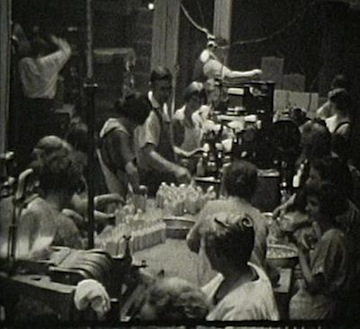 A.S. Hinds Laboratory / Northeast Historic Film, in Portland, Maine, received a grant to create descriptive records for 50 significant film collections dating from the first half of the 20th century relating to work life in the period 1916-1960. The films document work by men and women in northern New England agricultural environments, traditional and modernizing industries, and early twentieth century urban situations. Subjects of interest include mechanization, urbanization, changing practices of consumption, environmental change, forestry, fishing, and maritime life in the Northeast. Examples include a 1921 film depicting small boats by marine architect Norman Skene (author of Elements of Yacht Design); workers in the A.S. Hinds cosmetics factory in Portland, Maine, by Charles B. Hinds; and film from the American Writing Paper Company, Holyoke, Mass.
A.S. Hinds Laboratory / Northeast Historic Film, in Portland, Maine, received a grant to create descriptive records for 50 significant film collections dating from the first half of the 20th century relating to work life in the period 1916-1960. The films document work by men and women in northern New England agricultural environments, traditional and modernizing industries, and early twentieth century urban situations. Subjects of interest include mechanization, urbanization, changing practices of consumption, environmental change, forestry, fishing, and maritime life in the Northeast. Examples include a 1921 film depicting small boats by marine architect Norman Skene (author of Elements of Yacht Design); workers in the A.S. Hinds cosmetics factory in Portland, Maine, by Charles B. Hinds; and film from the American Writing Paper Company, Holyoke, Mass.
University of Southern California Libraries: outtakes from the nightly TV program Ralph Story’s L.A. (1964-70) are among the materials that the library is processing that relate to Los Angeles urban and social history. Subjects documented in the various materials include California politics and community activism; L.A.’s freeways and architectural history; the 1992 riots; urban expansion; and the careers of early 20th-century women’s voting rights activist Amy Ransome.
Printed from Moving Image Archive News: http://www.movingimagearchivenews.org
URL to article: http://www.movingimagearchivenews.org/collections-worth-seeing-hidden-in-plain-sight/
Click here to print